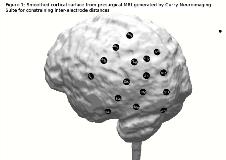Presurgical planning of intracranial grid placement for improvement of seizure control.
Abstract number :
2.392
Submission category :
18. Late Breakers
Year :
2010
Submission ID :
13449
Source :
www.aesnet.org
Presentation date :
12/3/2010 12:00:00 AM
Published date :
Dec 2, 2010, 06:00 AM
Authors :
R. D. Triolo, S. Vogrin, M. Wagner, K. Morris, M. Cook, M. Murphy
Rationale: Investigations of refractory epilepsy using intracranial electrodes remains a highly invasive procedure with significant risks related to size of craniotomy and distribution of implanted electrodes. A priori definition of epileptogenic zone is crucial to optimize spatial EEG sampling via accurate electrode placement and ultimately confirm extent of resection for seizure control. A novel technique to mediate this risk using improved neuronavigation models of individual brains is indicated. Methods: In patients with implanted strip or grid electrodes for EEG monitoring, presurgical MRI data was imported into Curry Neuroimaging Suite 7 (CNS) (Compumedics Neuroscan, Charlotte, NC, USA) and used for constructing head and cortex models. A novel interactive, semi-automatic procedure was employed to define these electrode positions. The operator, able to freely move and rotate individual grids and strips, had certain parameter constraints automatically enforced by the software. These constraints included inter-electrode distances (20, 10 and 5mm), an orthogonality constraint between grid rows and columns, and electrodes were required to reside on a smoothed representation of the cortical surface. Results: Planned electrode positions were exported as high intensity points on T1 scans for visualisation using frameless stereotactic registration of the Stealth Neuronavigation System (Medtronic, Louisville, CO, USA). Confirmation of electrode placement intraoperatively was performed using neuronavigation probe sampling specific points. Validation of preplanned electrodes was confirmed from models using high resolution CT.Conclusions: This technique represents a novel approach to objective placement of intracranial electrodes, reducing the impact of inadequate EEG spatial sampling from misplacement. It has the potential to more accurately define an epileptogenic focus prior to resection and therefore lead to improved seizure control.

